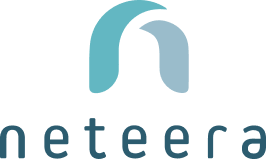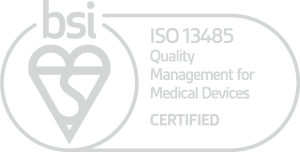Nearly 6 million Americans are living with Alzheimer’s disease today, a number expected to rise significantly in the coming years (Alzheimer’s Association, 2023). As caregivers manage the increasing complexities of this condition, a major challenge is anticipating and reducing agitation and anxiety before they escalate.
What if caregivers could detect early warning signs before an episode occurs?
With real-time Alzheimer’s monitoring, caregivers can now receive immediate insights into changes in vital signs and activity patterns, allowing for early intervention. Neteera’s contactless monitoring solution is leading this transformation, helping caregivers respond proactively, potentially reducing physical intervention, and fostering a calmer, more comfortable patient environment.
The Benefits of Real-Time, Non-Invasive Monitoring
Reducing Patient Agitation Without Physical Contact
Traditional monitoring often requires physical touch, which can cause distress for Alzheimer’s patients. Neteera’s contactless technology eliminates this issue by continuously tracking heart rate, respiratory rate, and activity levels without requiring direct interaction.
- Less agitation: No unnecessary handling reduces patient discomfort.
- Continuous insights: Caregivers can monitor near-real-time changes.
- Early alerts: Immediate notifications when a patient shows signs of distress.
By detecting early signs of agitation—such as elevated heart rates or sudden movements—before they escalate, caregivers can step in with calming strategies, improving patient care.
Data-Driven Insights for Personalized Alzheimer’s Care
One of the most valuable aspects of real-time Alzheimer’s monitoring is its ability to track behavioral patterns over time. The Neteera System provides data-driven insights that can help caregivers understand triggers for restlessness, wandering, and sleep disturbances.
How Real-Time Data Supports Personalized Care
- Identifying patterns: Caregivers can pinpoint trends in agitation, helping to adjust daily routines.
- Optimizing care plans: Tailoring interventions based on individual patient behavior improves outcomes.
- Reducing caregiver burden: Proactive care minimizes emergency interventions and stress.
For example, if nighttime restlessness increases, caregivers can adjust sleep environments, introduce calming activities, or change care routines to prevent agitation. This proactive approach improves quality of life while also reducing reactive responses to caregivers.
Enhancing Patient Safety and Caregiver Efficiency
Preventing Wandering and Falls
Alzheimer’s patients are at high risk for wandering, falls, and injuries. The Neteera System’s near-real-time monitoring system includes:
- Bed exit detection: Alerts caregivers when a patient leaves the bed, allowing for immediate response.
- Fall risk monitoring: Tracks sudden movements that could indicate falls or distress.
- Continuous safety tracking: Reduces reliance on physical restraints or manual checks.
These features provide an extra layer of security, enabling caregivers to intervene before an accident occurs.
Improving Caregiver Efficiency
By automating routine monitoring, caregivers can focus on high-value tasks such as:
- Meaningful patient engagement
- Emotional support instead of manual tracking
- Reducing burnout with more efficient workflows
Real-time alerts help ensure that caregivers only step in when necessary, reducing unnecessary interruptions and stress.
Promoting Independence and Improving Communication
Alzheimer’s patients benefit when they can maintain a sense of independence while still receiving the care they need. Neteera’s passive patient monitoring system supports this by:
- Minimizing disruptions to the patient
- Protects the patient’s privacy in their room
- Ensuring care without constant physical checks
Better Coordination Between Care Teams
The near-real-time data collected by Neteera can be securely shared with doctors, specialists, and family members.
- Improved care coordination enables all providers to have access to the latest patient health data.
Streamlined communication can lead to better decision-making and faster intervention when necessary.
A Smarter Approach to Alzheimer’s Care
As Alzheimer’s cases continue to rise, real-time patient monitoring is becoming essential for delivering proactive, data-driven care. Neteera’s smart solution offers a next-generation approach that:
- Reduces agitation and anxiety with non-invasive tracking
- Allows enhanced safety by potentially preventing wandering and falls
- Optimizes caregiver efficiency by automating routine tasks
- Provides real-time data to improve care coordination
By embracing this technology, caregivers can offer more personalized care, improve patient comfort, and reduce stress for patients and their families.
Partner With Neteera for Next-Level Alzheimer’s Care
Neteera’s contactless remote patient monitoring system empowers caregivers to deliver more efficient, compassionate, and proactive care. Reducing the burden of manual tracking allows healthcare professionals to focus on what truly matters—supporting patients and improving quality of life.
Ready to transform Alzheimer’s care?
Request a demo of the Neteera System today and learn how our innovation can help you enhance patient safety and caregiver efficiency.
Everything You Need to Know About Real-Time Alzheimer’s Monitoring
What is real-time Alzheimer’s monitoring?
Real-time Alzheimer’s monitoring uses advanced contactless sensors to continuously track heart rate, respiratory rate, movement, and bed activity, helping caregivers respond proactively.
How does real-time monitoring reduce agitation in Alzheimer’s patients?
By eliminating physical contact and providing early alerts for signs of distress, caregivers can intervene before agitation escalates, creating a calmer environment for patients.
Can real-time monitoring prevent falls and wandering?
Yes, bed exit detection and movement tracking alert caregivers immediately, helping caregivers to intervene for patients at risk of falling or wandering.
How does real-time data improve Alzheimer’s care?
Continuous monitoring tracks movement trends, providing caregivers with data that allows them to adjust routines, medication, and activities to reduce agitation and improve patient well-being.
Is real-time Alzheimer’s monitoring difficult to set up?
No, the Neteera System is non-invasive and easy to implement. It requires no wearables or manual adjustments from patients or caregivers.
How does Neteera’s technology support caregivers?
By automating routine monitoring, the Neteera Solution can reduce stress, improve efficiency, and allow caregivers to focus on meaningful patient interactions.
Ready to dive in? Let’s continue the conversation. Contact Neteera to discover how we can help.








